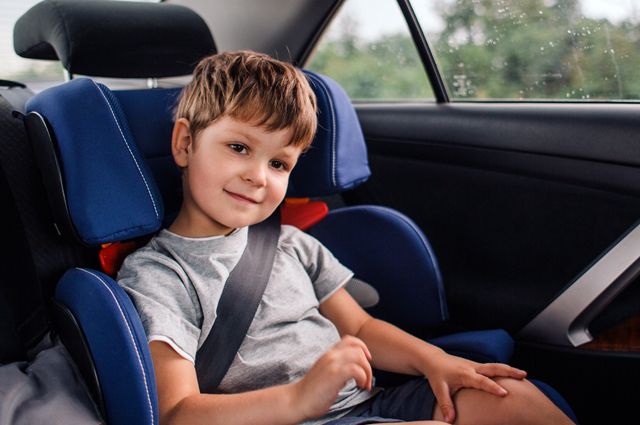
When is my child ready to use the seat belt?
In all major life events, we often look at age as the primary determinant of readiness—from when a child is ready to go to school to when they can get a driver's license and everything in between. Parents also usually assign new responsibilities to their children when they reach a certain age, so it's wise for parents to use age as a determining factor when moving from car seats to seat belts. But age isn't the only consideration to consider when preparing for a jump—there are several other equally important but often overlooked factors.
When making the decision to switch to a seat belt, a parent should take into account, first of all, weight and especially height. While age is a good starting point, the most important consideration is how comfortable and secure your child fits in car seats or booster seats designed for their size. The child should be kept in the rear-facing seat for as long as possible because this is the most ideal position to protect the head in the event of heavy braking.
Below is a quick guide to using car seats and seat belts by age. You can also enter your child's information here to find the car seat that's right for you. Different manufacturers and models of car seats may have different height and weight requirements, so be sure to check these before purchasing. In all variants, the back seat is the best place to buckle up your child.
Newborn up to 12 months: Rear facing car seats
1-3 years: Forward facing car seats. It's usually best to stay in rear-facing seats for as long as your child's size allows.
4-7 years: Forward-facing car seats with harness and harness until child outgrows height restriction.
7-12 years: Booster seat with harness until your child is tall enough for the harness to fit properly across the top of the thighs, chest and shoulder.
The state has some laws that dictate when a child must be in a rear-facing car seat; these laws may change annually, so check your state government's website to make sure you're up to date with the current rules. For example, as of January 2017, California law requires all children under the age of two to be strapped into a rear-facing car seat, unless they are over forty pounds in weight or forty inches in height.
Rear facing car seats
Infants and toddlers should always wear their seat belts in a rear-facing car seat with a five-point seat belt in the back seat of any vehicle without exception, especially vehicles equipped with passenger-side airbags, for maximum safety. But after the baby years move into early childhood, children usually, but not always, outgrow the maximum height limit for almost all commercially available infant and toddler car seats, usually around the age of four. Just because they're no longer in the toddler phase, however, doesn't mean they're ready to jump straight into extra seats and harnesses.
Forward facing car seats
When a child is no longer small enough to fit comfortably and safely in a rear-facing car seat, they can instead be strapped into a forward-facing car seat. This is usually recommended around the age of three, but again, size is a key factor, especially height - kids usually outgrow the seat in inches, not pounds. If your child is too big for a rear-facing car seat, it's time to move to a forward-facing seat, regardless of age. Again, rear-facing seats are the safest for children and should be used for as long as physically possible.
Additional seats
Standard seat belts are made with an adult in mind, not a small child. While the lap belt secures the body at the waist, the shoulder belt must pass across the chest and right shoulder, securing the body to the seat and preventing it from slipping under the lap belt in the event of a collision. a phenomenon commonly known as "scuba diving". Young children are generally too small for shoulder harnesses, increasing their risk of flooding, so even if they have outgrown forward-facing car seats, they should still be strapped into a car seat.
The booster is designed to lift a child so that the shoulder straps can cross their chest and shoulder in the same way that adults should wear it, and is the only type of seat where height alone determines how long it should be used. . If your child can't sit in the seat and comfortably bend their legs over the edge while sitting with their back against the back of the seat, they're still too small for a seatbelt and should be in a booster seat no matter how old they are - though they won't tell you thanks for that if they are twelve years old and still smaller.
So, when is your child ready to use the seat belt?
The magic number that determines readiness in most other aspects of life is age, but in the case of seat belts and car seats, height comes first, weight comes second, and age comes third. Compare your child's height to the maximum safe tolerance of any child restraint system and remember - cars are made for adults and seat belts are no exception. Your child will need to mature a bit before they are ready to sit in an adult chair.